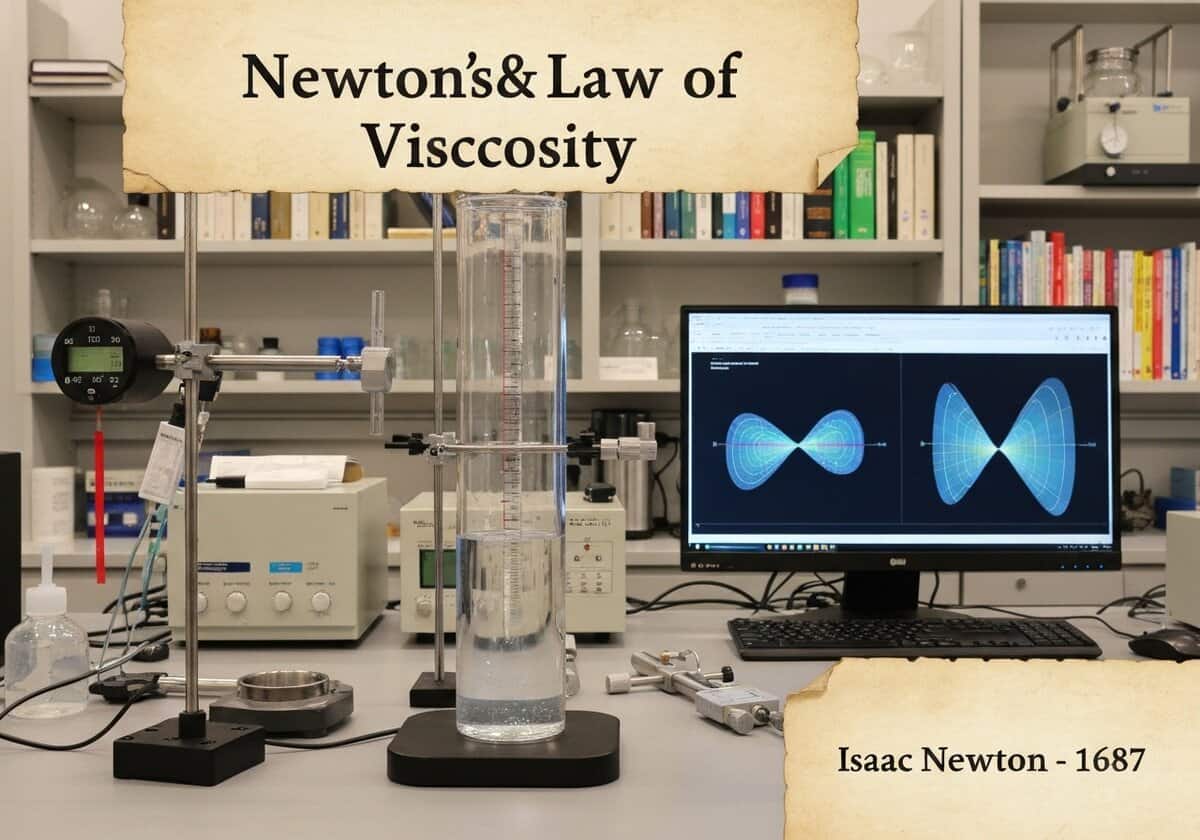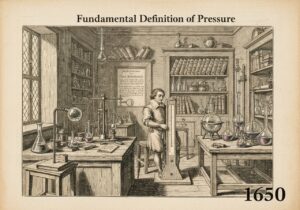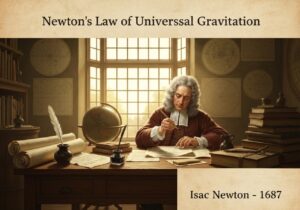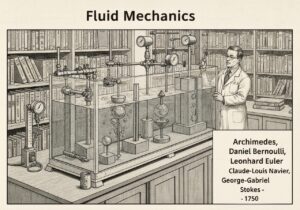A Newtonian fluid’s shear 强调 is directly proportional to the rate of shear 压力. This linear relationship is defined by Newton’s law of viscosity: [latex]\tau = \mu \frac{du}{dy}[/latex], where [latex]\tau[/latex] is the shear stress, [latex]\mu[/latex] is the dynamic viscosity (a constant of proportionality), and [latex]\frac{du}{dy}[/latex] is the shear rate or velocity gradient.
牛顿粘度定律
- Isaac Newton

Newton’s law of viscosity establishes the fundamental 构成方程 for a Newtonian fluid. It postulates that for a simple shear flow, the force per unit area (shear stress, [latex]\tau[/latex]) required to move one layer of fluid relative to another is proportional to the rate at which the velocity changes with distance perpendicular to the flow (the velocity gradient or shear rate, [latex]\frac{du}{dy}[/latex]). The constant of proportionality, [latex]\mu[/latex], is known as the dynamic viscosity, a material property that measures the fluid’s resistance to flow. For a Newtonian fluid, this viscosity is constant and depends only on temperature and pressure, not on the forces acting upon it.
This linear model is an idealization but accurately describes many common fluids like water, air, and simple oils under typical conditions. The concept is foundational to fluid dynamics, allowing for the derivation of the Navier-Stokes equations, which govern the motion of viscous fluid substances. The law implies that a Newtonian fluid will begin to flow immediately upon the application of any shear stress, no matter how small. This contrasts with 非牛顿 fluids, which may exhibit shear-thinning, shear-thickening, or require a minimum yield stress before flowing.
Historically, Isaac Newton proposed this relationship in his 1687 *Philosophiæ Naturalis Principia Mathematica*. He did not express it in the modern differential form but described the concept of a “defect of lubricity” or internal friction in fluids. The modern mathematical formulation was developed later by mathematicians and physicists like Cauchy and Stokes, who incorporated it into a more general framework for continuum mechanics.
- 空气动力学, 面向制造设计 (DfM), 可靠性设计(DfR), 流体力学, 工艺优化, 质量管理, 流变学, 可持续实践
类型
中断
使用方法
前体
- Evangelista Torricelli’s work on fluid efflux (Torricelli’s Law)
- Blaise Pascal’s principles of hydrostatics (Pascal’s Law)
- Isaac Newton’s laws of motion
- Development of calculus by Newton and Leibniz
应用
- 水和油输送管道的设计
- 机翼和车身的空气动力学分析
- 轴承和齿轮的润滑理论
- 天气模式和洋流建模
- 化学过程 engineering for mixing and reaction vessels
专利:
迎接新挑战
机械工程师、项目、工艺工程师或研发经理
可在短时间内接受新的挑战。
通过 LinkedIn 联系我
塑料金属电子集成、成本设计、GMP、人体工程学、中高容量设备和耗材、精益制造、受监管行业、CE 和 FDA、CAD、Solidworks、精益西格玛黑带、医疗 ISO 13485
历史背景
牛顿粘度定律
(如果日期不详或不相关,例如 "流体力学",则对其显著出现的时间作了四舍五入的估计)。
相关发明、创新和技术原理




























